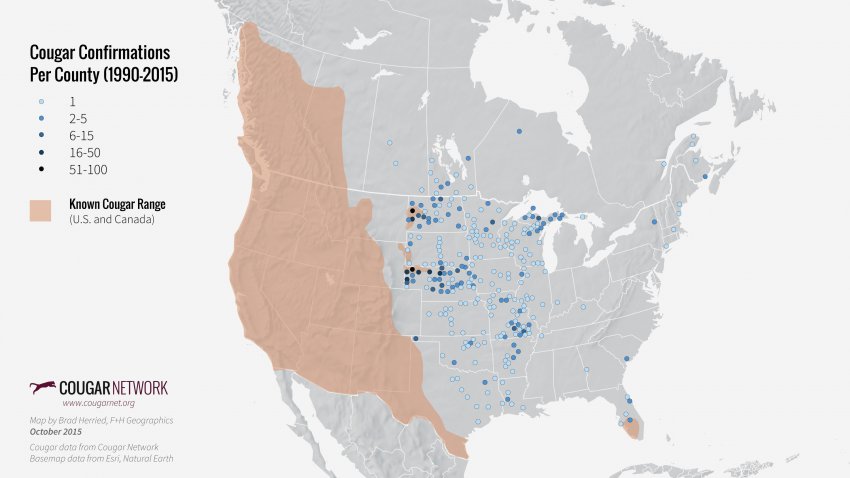News that the eastern cougar has gone extinct is capturing headlines today. That’s a bit misleading, as the subspecies was actually officially declared extinct in 2011, and it’s probably been totally absent from the East Coast for at least 80 years.
Most stories also fail to mention that cougars are actually returning to the east.
On Tuesday, the U.S. Fish and Wildlife Service completed proceedings to remove the eastern cougar from the Endangered Species list. It’s just the conclusion of a drawn-out process that left time for public comment and peer review. But hey, cool cat, humans destroying the planet—it’s a news story.
All this fails to catch a few interesting points:
- All North American cougars, pumas, catamounts, mountain lions, or whatever you want to call them, are actually the same species—Puma concolor. Eastern cougars had a little smaller heads than those of the ones we have out West, and they lived in the northeast. That’s it.
- There’s probably a handful of Puma concolor in the northeast right now. They’re just not of the eastern subspecies.
Let me explain. Since about 1990, researchers have been tracking small pockets of cougar populations east of their current established range, which ends at the Rocky Mountains. It’s a promising start for the species re-establishing itself through parts of its once continent-wide habitat. Some of those new populations have grown large enough…





